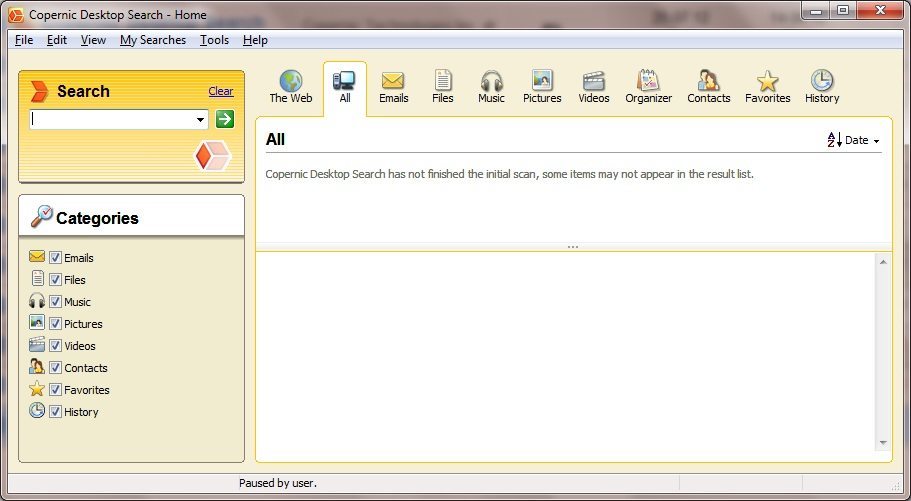

- #FREEZING COPERNIC DESKTOP SEARCH CODE#
- #FREEZING COPERNIC DESKTOP SEARCH TRIAL#
- #FREEZING COPERNIC DESKTOP SEARCH WINDOWS#
Where(d => d.DriveFormat = "NTFS").ToList() This is done with this code: var ntfsDrives = DriveInfo.GetDrives() The next step is to detect the NTFS disks in your system. Then, you must change the requestedExecutionLevel tag of the file to: Choose Application Manifest File, you will have an app.manifest file added to your project. Then create a new WPF project and add a new item.

Open Visual Studio with administrative rights (this is very important, or you won’t be able to debug your program). You will be able to select any of the NTFS disks in your machine. It will enumerate all files and show them in the list, so you can see what’s taking space in your disk. We will create a WPF program that will show the disk usage.
#FREEZING COPERNIC DESKTOP SEARCH CODE#
If you include the library source code in your code, it will be “derived work” and you must distribute all code as LGPL. You can use the library in your compiled work as a library, with no restriction.
#FREEZING COPERNIC DESKTOP SEARCH TRIAL#
This is a lot of work and hours of trial and error.įortunately, there are some libraries that do that in C#, and I’ve used this one, which is licensed as LGPL. You will have to decipher the structure (there is a lot of material here) and access the data using raw disk data read (that’s why you need elevated privileges). There is no formal API to access the MFT structure.
#FREEZING COPERNIC DESKTOP SEARCH WINDOWS#
With great power comes great responsibility (this is a SpiderMan comic book quote), so you should know that accessing the internal NTFS structures may harm you system irreversively – use the code with care, and don’t blame me if something goes wrong (but here’s a suggestion to Windows API designers: why not create some APIs that query the NTFS structures safely for normal users? That could be even be added to UWP programming).To access the MFT structures, you must have elevated privileges – a normal user won’t be able to access it.So, you cannot access FAT drives with this API The MFT is only available for NTFS volumes.But some things should be noted when accessing the MFT: It was designed to be fast and safe (there are two copies of the MFT, in case one of them gets corrupt), and we can access it to get our files enumerated. The NTFS MFT is a file structure use internally by Windows that allows querying files in a very fast way. Or no? As a matter of fact there is something in the Windows system that allows us to query the files in a very fast way, and it’s called the NTFS MFT (NT file system master file table). So, we have to stick with our current APIs to query files. The pitfall is that you don’t have an API to integrate to your programs, so the only way you have is to query the files is to use their apps.Īt some time, Microsoft thought of doing something like a database of files, creating what was called WinFS – Windows Future Storage, but the project was cancelled. Wouldn’t it be nice to have a database that stores all files in the system and is updated as the files change? Some apps, like Copernic Desktop Search or X1 Search do exactly that: they have a database that indexes your system and can do fast queries for you. With the Windows file indexing, this has gone to another level of speed: you can query and filter your data almost instantaneously, with one pitfall: it only works in the indexed parts of the disk (usually the libraries and Windows folders), being unusable for your data folders, unless you add them to the indexer: All the file enumeration techniques go through the disk structures querying the file names and going to the next one. Many times I need to enumerate the files in my disk or in a folder and subfolders, but that always has been slow.


 0 kommentar(er)
0 kommentar(er)
